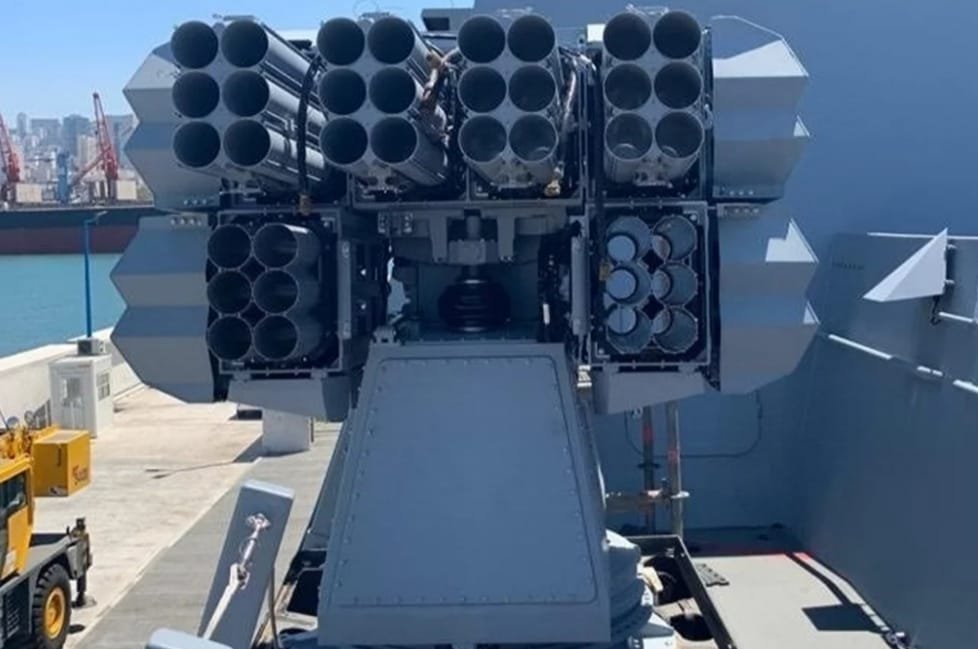
Israel Elbit Systems Deseaver MK 4 redefines Naval Defense with advanced decoy capabilities
The Israeli company Elbit Systems has introduced the DESEAVER MK 4, fourth-generation rotatable and stabilized decoy launcher designed to strengthen naval anti-missile defense. This latest system integrates seamlessly with Elbit’s Aqua Marine – Integrated Electronic Warfare Suite (IEWS), which consolidates an array of advanced electronic warfare capabilities to detect, counter, and neutralize missile threats from multiple vectors. Through this sophisticated integration, DESEAVER MK 4 provides robust perimeter protection against concurrent, multi-directional missile attacks, elevating the defensive resilience of naval vessels.
The Aqua Marine IEWS suite is a comprehensive electronic warfare solution that enhances the DESEAVER MK 4’s effectiveness. It combines Radar Electronic Support Measures (RESM), Radar Electronic Counter Measures (RECM), Communication Electronic Support Measures (CESM), Communication Electronic Counter Measures (CECM), and an Immune Satellite Navigation System (iSNS). Each of these components contributes to a comprehensive shield against missile threats, ensuring vessels remain safeguarded across a spectrum of modern threats. RESM and CESM enable the system to monitor radar and communication emissions, respectively, while RECM and CECM actively disrupt enemy signals, rendering targeting efforts ineffective. The iSNS further enhances survivability by providing resilient satellite navigation free from jamming or spoofing.
At the heart of the DESEAVER MK 4’s capabilities is its rotatable and stabilized launcher, designed to adapt to fast-moving, multi-directional threats. It deploys an array of decoy payloads, including traditional chaff, corner reflectors, and active Radio Frequency (RF) decoys, allowing for a flexible response to varied missile guidance systems. The stabilization of the launcher ensures precise targeting and deployment, even in rough sea conditions, maximizing the defensive potential of each payload.
In an operational scenario, the DESEAVER MK 4 can respond to multiple threats simultaneously, launching decoys from a maneuverable platform that adapts to dynamic engagements. This ability to release payloads in precise time intervals, aligned with anti-missile doctrines and tailored response guidelines, ensures that decoys are deployed at the most effective moments to lure missiles away from the vessel.
Naval decoy launcher systems are essential in modern naval warfare, offering sophisticated defenses against missile and torpedo threats. Leading systems globally each bring unique attributes to the table. SEA’s Ancilia system, for instance, is a high-performance trainable decoy launcher designed to address modern threats like hypersonic and ballistic missiles. Ancilia’s modular configuration allows it to launch multiple decoy types while integrating seamlessly with ship combat management systems. Its compact design suits a variety of platforms, and its recent adoption by the Royal Navy speaks to its operational reliability.
Meanwhile, Terma’s C-Guard system provides comprehensive 360° coverage, leveraging SeaGnat-compatible decoys to counter advanced threats such as small range gate RF missiles and next-generation torpedoes. Its fixed launcher setup, designed with minimal moving parts, promises both high availability and ease of maintenance, and its modularity supports a wide range of decoy types that can be tailored to the ship’s defense needs.
BAE Systems’ Mk 53 Nulka decoy launching system, jointly developed by the U.S. and Australia, offers a unique approach with its hovering decoy, designed to draw radar-guided missiles away from their target. This system can function independently or integrate with a ship’s combat system, giving it versatile deployment options in high-threat environments.


